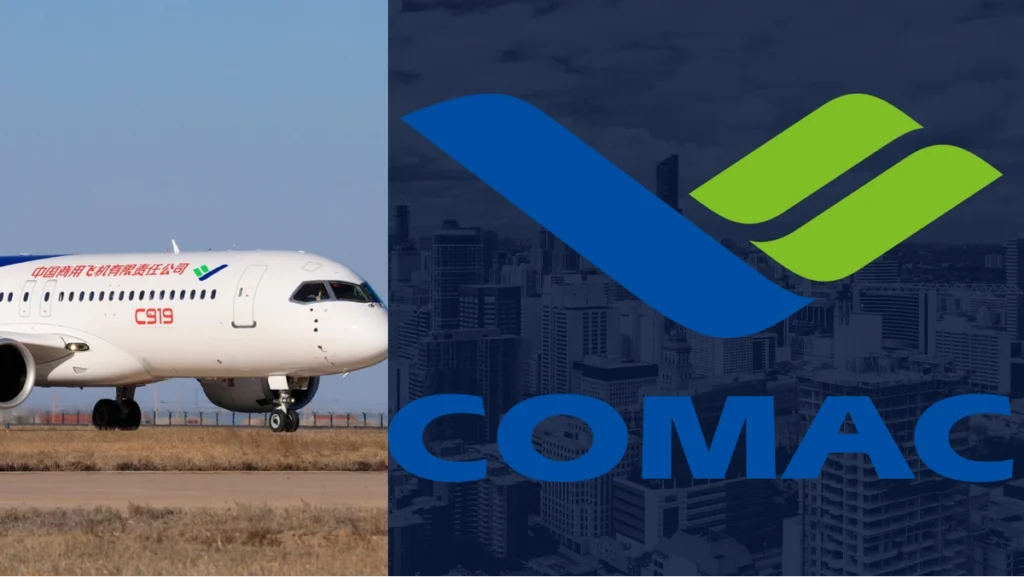Read more ARTICLE
Why Municipal Bond ETFs for Retirement Benefits?
How Bonds Work with Interest Rates
- 1 COMAC Targets Southeast Asia with C919 Jet Flights by 2026
- 1.1 COMAC Targets Southeast Asia with C919 Jet Flights by 2026: What’s the Plan?
- 1.2 The C919: A Game-Changer for the Region?
- 1.3 COMAC Targets Southeast Asia with C919 Jet Flights by 2026: The Competitive Edge
- 1.4 A Competitive Market and Potential Challenges
- 1.5 Conclusion: COMAC Targets Southeast Asia with C919 Jet Flights by 2026
COMAC Targets Southeast Asia with C919 Jet Flights by 2026
Chinese aircraft manufacturer COMAC (Commercial Aircraft Corporation of China) has set ambitious goals for its flagship aircraft, the C919, as it aims to make a significant impact on the Southeast Asia aviation market by 2026. The C919, a narrow-body jet designed to rival Western giants like the Boeing 737 and Airbus A320, is poised to offer a competitive alternative to the established players in the region. With increasing demand for air travel and a rapidly growing middle class in Southeast Asia, COMAC’s entry into this market could reshape the regional aviation landscape.
COMAC Targets Southeast Asia with C919 Jet Flights by 2026: What’s the Plan?
COMAC’s entry into Southeast Asia comes at a time when air travel demand in the region is booming. According to the International Air Transport Association (IATA), Southeast Asia is one of the world’s fastest-growing aviation markets. Countries like Indonesia, Vietnam, Thailand, and the Philippines are seeing rapid increases in air traffic due to rising disposable incomes, tourism growth, and expanding urbanization.
By 2026, COMAC aims to position the C919 as a major player in this growing market. The C919 aircraft launch, which has been in development since 2008, has already made significant strides in its certification process. COMAC plans to launch the C919 in China first, but it has its sights set on Southeast Asia as a key export market for the jet in the coming years.
The C919 will initially be offered to domestic Chinese airlines, but with increasing interest from international carriers, especially in emerging markets, Southeast Asia is expected to be one of the first regions where the C919 aircraft is used outside of China. The goal is to not only offer competitive pricing but also leverage China’s Belt and Road Initiative aviation to secure deals with Southeast Asian airlines.

The C919: A Game-Changer for the Region?
The C919 jet is often described as a potential game-changer for the global aviation market. Built to compete directly with the Boeing 737 and Airbus A320, the aircraft is designed to carry up to 168 passengers on medium-haul routes. While China’s COMAC has faced delays in the C919 development progress, the C919 is now one step closer to commercial operation, with its first test flight completed in May 2017.
The aircraft is powered by a new engine developed by CFM International, a joint venture between General Electric and Safran. The C919 is expected to have a range of up to 5,555 kilometers (about 3,450 miles), making it ideal for regional flights across Southeast Asia. Airlines in the region will be particularly interested in the C919 because of its fuel-efficient aircraft Southeast Asia design, which is crucial for reducing operational costs, especially given the rising cost of aviation fuel.
For COMAC, entering the Southeast Asia aviation market with the C919 is part of a broader strategy to challenge the dominance of Boeing and Airbus in global aviation. While these two companies have long held a near-monopoly on aircraft production, COMAC aims to carve out a niche by offering a competitive alternative that meets the specific needs of the rapidly growing Southeast Asia air travel market.
COMAC Targets Southeast Asia with C919 Jet Flights by 2026: The Competitive Edge
Southeast Asia presents a unique set of challenges and opportunities for aircraft manufacturers. While Boeing and Airbus currently dominate the market, COMAC’s C919 is well-positioned to offer airlines a lower-cost alternative. COMAC’s goal is not only to attract large international airlines but also to tap into the growing number of low-cost carriers (LCCs) in the region, many of which are looking for affordable, reliable aircraft to expand their fleets.
The C919‘s design focuses on maximizing fuel efficiency, which is a key selling point for airlines operating in Southeast Asia’s high-growth, price-sensitive environment. Additionally, the aircraft’s larger cabin and advanced features, such as quieter engines and more efficient aerodynamics, are expected to make it an appealing choice for carriers looking to modernize their fleets.
One of the biggest advantages that COMAC can leverage is China’s Belt and Road Initiative aviation, which has helped establish stronger economic ties between China and Southeast Asian nations. The BRI has led to increased infrastructure investments and economic cooperation, which could create an environment conducive to COMAC’s entry into the region. Chinese diplomacy and economic influence in Southeast Asia are seen as an important factor in COMAC’s ability to secure contracts for the C919.
A Competitive Market and Potential Challenges
Despite the optimism surrounding COMAC’s plans, the Southeast Asia aviation market is highly competitive, and gaining traction will not be easy. Boeing and Airbus have a long-established presence in the region, and their aircraft are trusted by airlines for their reliability, performance, and global service network.
For COMAC to succeed, the company will need to ensure that the C919 meets international safety standards, which include certification from the European Union Aviation Safety Agency (EASA) and the U.S. Federal Aviation Administration (FAA). The C919 is currently undergoing certification by the Civil Aviation Administration of China (CAAC), but obtaining certifications from other major aviation regulators will be crucial for its global acceptance.
Additionally, COMAC will have to address concerns related to the supply chain and spare parts availability. One of the key advantages that Boeing and Airbus have over newer entrants is their established networks for parts and maintenance services, which is crucial for keeping aircraft operational.
Conclusion: COMAC Targets Southeast Asia with C919 Jet Flights by 2026
In conclusion, COMAC targets Southeast Asia with C919 jet flights by 2026, marking a significant milestone in China’s aviation industry. With the rapidly growing aviation market growth Southeast Asia, COMAC’s entry into the region could shake up the dominance of Boeing and Airbus, offering airlines a cost-effective and competitive alternative.
However, while the potential is huge, the company faces significant challenges, including establishing a global service network, gaining COMAC aircraft certification from international regulators, and competing with well-established players. If COMAC can navigate these hurdles, it could usher in a new era for regional aviation Southeast Asia, with the C919 as a key player in the skies. As 2026 approaches, all eyes will be on the development and rollout of this highly anticipated aircraft.








